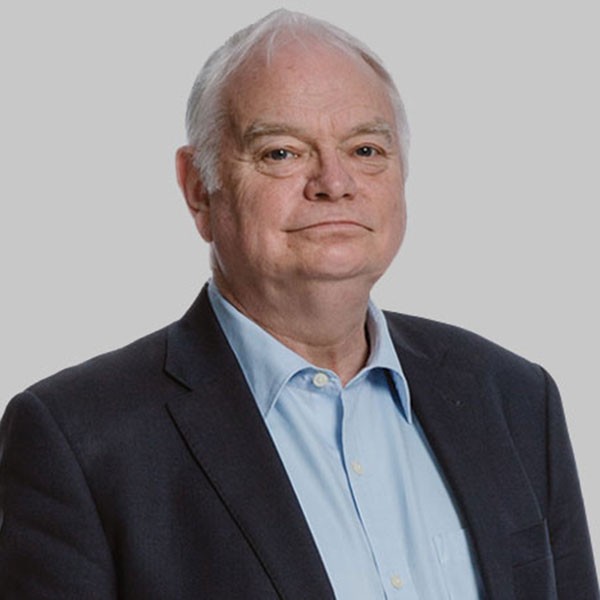
No one expects to laugh about tax, particularly when you are talking about the third largest revenue-raising tax in the UK. But laugh about it they do. This year VAT, which raises over twice as much as corporation tax each year, celebrates its 50th birthday.
It probably didn’t help that the then Chancellor of the Exchequer announced that it would be ‘a simple tax on the supply of goods and services’. In fact, purchase tax, which it superseded – and which still happily exists in the US – remains far simpler.
Seeds of nonsense
VAT was expected to be a matter of simple bookkeeping and accounting. And, to a large extent, that remains true. But it was sold to the public as a vague tax on luxuries, like televisions or yachts. Food, for example, would be taxed but in such a way that would not affect the poor.

Once people had got a taste for the sort of lunacies that would lead to pasty scandals, they revelled in it
A means had to be created to put tax on a Dover sole served at the Savoy Grill but keep it off fish and chips. A combination of the definition of a luxury and a takeaway became the answer. And the consequences of that policy decision have echoed down the VAT years since.
In 2012 the then chancellor, George Osborne, saw his Budget pronouncements completely upended with his self-inflicted pasty tax scandal. Were they hot? Were they still hot when you took them away? His prime minister, David Cameron, offered simple words of advice in his memoirs: ‘Never touch VAT definitions. It’s not worth the trouble’.
There are several reasons why the tax became monumentally complicated. First, instead of simply passing the relevant EU directive into law, the UK decided to add its own bells and whistles. ‘Other countries just cut and pasted it,’ says Scott Harwood, VAT partner at RSM, ‘but the UK put our own flavour on it.’
One early case was whether the Big Dipper in Blackpool should be deemed a means of transport or a fairground ride
That then gave people contesting the rules a choice. And once people had got a taste for the sort of lunacies that would lead to pasty scandals, they revelled in it. ‘The lines were badly drawn’, says Harwood. ‘There was not much case law. People got rather playful and the press loved it.’
The Jaffa Cake saga was a brilliant example. For what seemed years, the decision over whether the popular confection was a cake or a biscuit went spiralling up the courts and tribunals, guaranteeing headlines and mirth at every stage. The answer, that it was a cake and exempt, still made little sense, but it joined the pantheon of arguments over definitions.
My favourite was the very early case of whether the Big Dipper at Blackpool Pleasure Beach should be deemed a means of transport from A to B or a frivolous fairground ride undertaken for fun. Fun, in that case, won. But as soon as something is defined, someone else finds an angle by which to subtly suggest another answer.
VAT’s reliance on definitions and dependence on arcane concepts guarantees its longevity
When editing Accountancy Age, I ran a weekly column by the VAT practitioner John Price. My publisher would often suggest that we drop such an arcane column. They could never understand that it was one of the best-read sections of the paper.
VAT may have reached its 50-year milestone but culturally it is relatively new. And its reliance on definitions and dependence on arcane concepts guarantees its longevity. As I write, a case involving a zoo dinosaur structure has just concluded and one involving imported pappadums and customs duty is wending its way through the tribunals. There is never an end. As Harwood puts it: ‘I would like to think that in 200 years’ time we will have decided what catering means.’
From doughnuts to maggots
The case of the Jaffa Cakes was just the tip of the iceberg. The selling of doughnuts in London’s Battersea Park centred around whether they were being sold on the premises and thus liable under the rules on catering. A tribunal ruled that ‘there was no delineated area capable of constituting the premises where the consumption took place’. Or, as you and I would have said: Battersea Park is a big place.
There is big money involved in small decisions. ‘Never forget’, a VAT expert once earnestly told me, ‘that the Marks & Spencer teacake case cost the Exchequer around £360m.’
There have been arguments over maggots sold to fishermen from vending machines: were they simply food for the fish, or, as in a lobster-bait case, food to fatten them once trapped? Were Pringles snacks crisps or a maize-based product? Here, the argument rebounded. The largest ingredient was potato flour at 42%, but worse for the company’s reputation was that the second largest ingredient, at 33%, was revealed to be, ahem, fat.





